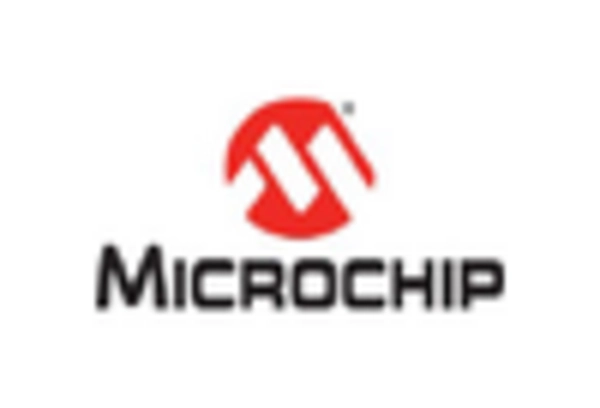Surge in Data Center Expansion
The ethernet phy-chip market in Japan is experiencing a notable surge due to the rapid expansion of data centers. As organizations increasingly migrate to cloud-based solutions, the demand for high-performance networking components escalates. In 2025, the data center market in Japan is projected to reach approximately $10 billion, driving the need for advanced ethernet phy-chips that support higher data rates and improved reliability. This expansion necessitates robust infrastructure, where ethernet phy-chips play a critical role in ensuring seamless data transmission. Furthermore, the growing trend of remote work and digital transformation initiatives further amplifies the demand for efficient networking solutions, positioning the ethernet phy-chip market as a pivotal player in supporting these developments.
Increased Focus on Cybersecurity
As cyber threats continue to evolve, the ethernet phy-chip market in Japan is witnessing a heightened focus on cybersecurity measures. Organizations are increasingly prioritizing secure data transmission, which necessitates the integration of advanced security features within ethernet phy-chips. The cybersecurity market in Japan is projected to grow by 15% annually, reaching approximately $10 billion by 2025. This growth is likely to drive demand for ethernet phy-chips that offer enhanced security protocols, ensuring the integrity and confidentiality of data. Consequently, manufacturers are compelled to innovate and develop chips that not only provide high-speed connectivity but also incorporate robust security features, thereby shaping the future landscape of the ethernet phy-chip market.
Rising Adoption of 5G Technology
The advent of 5G technology in Japan is poised to have a profound impact on the ethernet phy-chip market. With the rollout of 5G networks, there is an increasing demand for high-speed data transmission and low latency, which necessitates the use of advanced ethernet phy-chips. The telecommunications sector is expected to invest over $20 billion in 5G infrastructure by 2026, creating a substantial market opportunity for ethernet phy-chip manufacturers. These chips are integral to the functioning of 5G networks, facilitating faster data rates and improved connectivity. As 5G adoption accelerates, the ethernet phy-chip market is likely to experience significant growth, driven by the need for enhanced networking capabilities.
Government Initiatives for Smart Cities
Japan's government initiatives aimed at developing smart cities significantly influence the ethernet phy-chip market. With a focus on enhancing urban infrastructure through IoT and smart technologies, the demand for reliable and efficient networking solutions is on the rise. The government has allocated substantial funding, estimated at $5 billion, to support smart city projects, which include the deployment of advanced communication networks. Ethernet phy-chips are essential for enabling high-speed connectivity and data exchange among various smart devices. As these initiatives progress, The ethernet phy-chip market is expected to see increased adoption, driven by the need for robust networking solutions that can support the growing number of connected devices in urban environments.
Emergence of AI and Machine Learning Applications
The rise of artificial intelligence (AI) and machine learning applications in Japan is significantly influencing the ethernet phy-chip market. As industries increasingly adopt AI technologies, the need for high-speed data processing and transmission becomes paramount. The AI market in Japan is expected to reach $30 billion by 2025, driving demand for networking solutions that can support the massive data flows associated with AI applications. Ethernet phy-chips are essential for facilitating the rapid exchange of data between devices, enabling real-time processing and analysis. This trend suggests that the ethernet phy-chip market will likely expand as manufacturers respond to the growing requirements of AI and machine learning, positioning themselves to meet the demands of this evolving technological landscape.















Leave a Comment